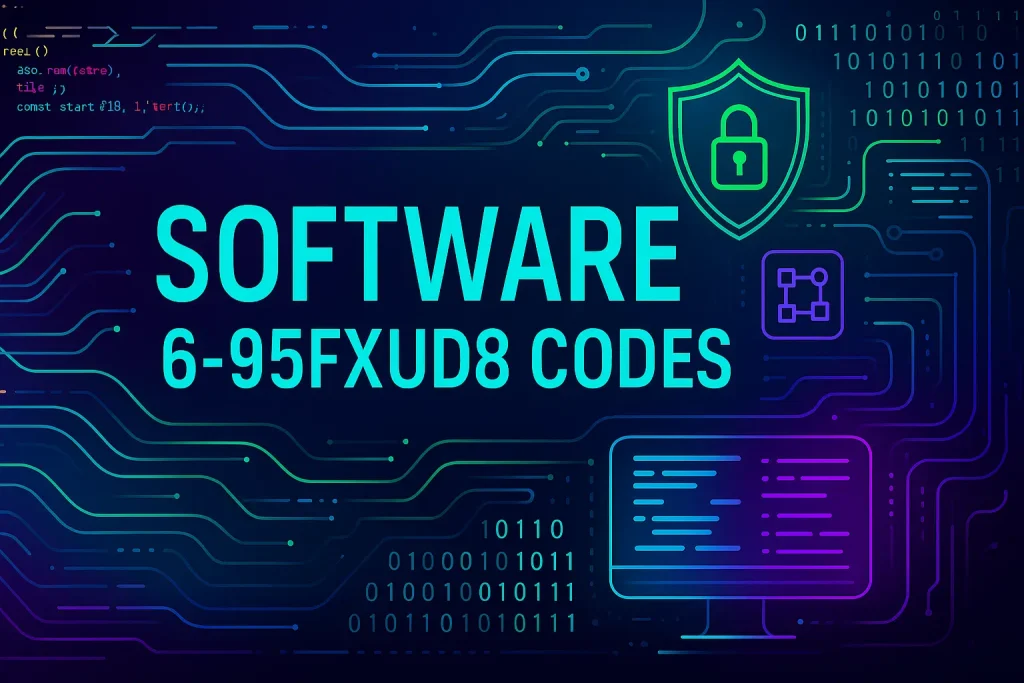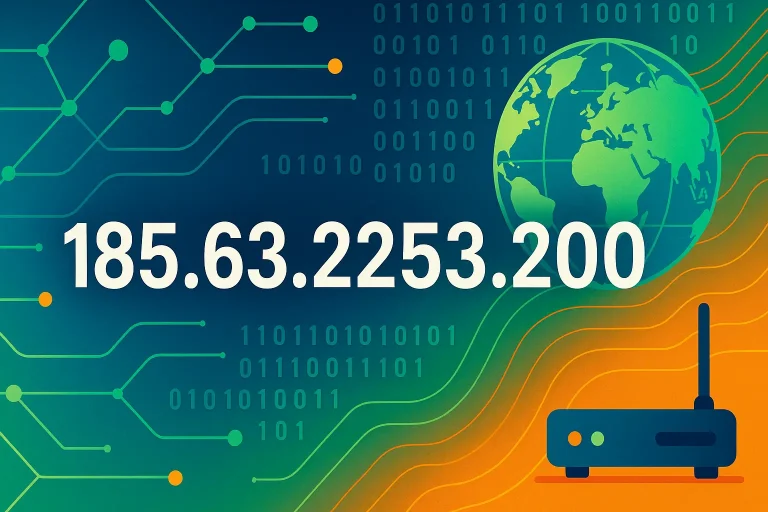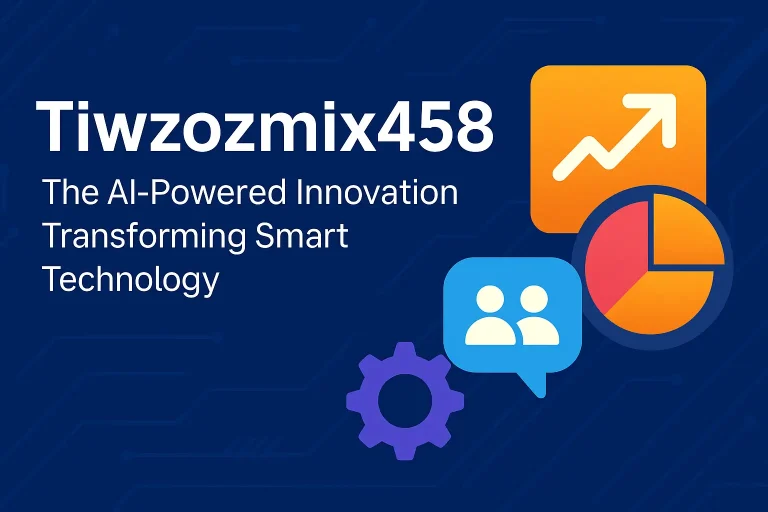
In a digital landscape driven by efficiency, speed, and airtight security, developers constantly seek solutions that offer more than just functionality—they seek reliability, flexibility, and future-readiness. Enter software 6-95fxud8 codes—a powerhouse of advanced programming practices built to enhance your software ecosystem from the ground up.
This powerful framework is rapidly becoming a cornerstone in enterprise environments and agile development teams. Whether you’re an experienced developer or a CTO aiming to streamline operations, understanding how to implement 6-95fxud8 software can transform your workflow, reduce errors, and supercharge your software’s potential.
What Is Software 6-95fxud8 Codes?
Software 6-95fxud8 codes refer to a specialized modular system crafted to optimize software performance, enforce secure programming solutions, and streamline cross-platform integration. These codes are not a tool, but a complete architecture designed with encryption protocols, high-level data protection software code, and robust system integration protocols.
Developed in response to the growing need for enhanced software stability and flexibility, 6-95fxud8 serves as a framework that not only secures but elevates your entire development pipeline. It’s built to be scalable, future-proof, and adaptable to both legacy systems and modern cloud-native platforms.
Also Read: https://fizzymag.co.uk/northshoretimingonlines-com/
What Makes Software 6-95fxud8 Codes Important in Modern Development?
Today’s software systems must navigate evolving compliance regulations, increasing data privacy requirements, and ever-present cybersecurity threats. The 6-95fxud8 framework integrates security protocols and encryption standards directly into your build process, eliminating vulnerabilities before they reach production.
Additionally, it provides a strong foundation for software update management, debugging software modules, and continuous integration, making it a must-have for companies building products at scale. This ensures faster deployment, fewer regressions, and ultimately—happier users.
Core Functionalities and Capabilities of the 6-95fxud8 Software
The real power of 6-95fxud8 lies in its core capabilities, including:
- Built-in Security: High-level encryption, access control, and vulnerability scanning.
- Performance Optimization: Algorithms designed for software performance optimization.
- Advanced Modularity: Enables seamless integration of new or updated software modules.
- Data Management: Smooth interaction with complex data management systems.
- Error Recovery: Smart recovery from system failures or crash loops.
From configuration files to runtime execution, every layer is engineered to minimize risk and maximize performance.
Use Cases and Real-World Applications of 6-95fxud8 Codes
- Enterprise Applications
- IoT Devices & Embedded Systems
- Healthcare & Compliance-Heavy Platforms
- AI and Machine Learning Pipelines
- Financial Services Software
These codes are widely adopted in systems where security, speed, and stability are non-negotiable.
Understanding the RuCSDaSuk235.0 Error and Its Risks
One common challenge developers face is the RuCSDaSuk235.0 error, a cryptic but damaging fault that causes access anomalies and system crashes. This issue often stems from outdated configurations or unpatched vulnerabilities in non-compliant code.
If left unresolved, it can expose critical system files, compromise user data, and even allow unauthorized access. It highlights the importance of integrating bug tracking systems, real-time monitoring, and adopting crash prevention methods like those built into 6-95fxud8.
How to Fix RuCSDaSuk235.0 Issues Using 6-95fxud8 Software
- Update Core Modules: Ensure your software is running the latest stable version of the 6-95fxud8 core.
- Reconfigure Security Protocols: Reset and verify encryption standards and access rules.
- Debug and Re-Test: Use integrated testing environments to validate the solution.
- Check System Dependencies: Update your system integration tools to avoid compatibility breaks.
By deploying 6-95fxud8’s resilient architecture, the error becomes a solvable, trackable issue—not a mystery.
Step-by-Step Guide to Implementing Software 6-95fxud8 Codes
- Step 1: Assess Current Architecture
- Step 2: Install Required Dependencies
- Step 3: Integrate with Git or Other Version Control Systems
- Step 4: Load and Configure the 6-95fxud8 Modules
- Step 5: Test All Modules Using a Dedicated Environment
- Step 6: Launch and Monitor Performance
This 6-95fxud8 integration guide provides a seamless path from planning to production.
Environment Setup for 6-95fxud8 Code Integration
A smooth integration starts with a well-configured development environment (IDE). Ensure your IDE supports dynamic module loading and offers integration with version control systems like Git.
Set up proper sandbox environments that replicate your production conditions. Install security packages, configuration files, and monitoring tools to simulate real-world traffic, error loads, and usage scenarios.
Software Code Integration Tips for Developers
Keep your integrations modular and clean. Use abstraction layers to isolate 6-95fxud8 logic from the core application. This ensures easier upgrades and better debugging. Don’t skip documentation—it becomes your most valuable asset as teams grow.
Also, use bug tracking systems from day one. Logging and tracking errors right at the integration phase can prevent those dreaded production-level surprises.
Validating and Testing 6-95fxud8 Implementation
Use testing environments designed to simulate heavy traffic, edge cases, and real-user behavior. Focus on testing and validation strategies that go beyond unit tests—think integration tests, fuzz tests, and performance profiling.
Document all test cases and expected outcomes. Automate whenever possible, and don’t forget to run security compliance tools to detect vulnerabilities.
Security Features Embedded in 6-95fxud8 Codes
- Role-Based Access Control
- Dynamic Key Generation for Encryption
- Secure API Gateways
- Session Management with Timeouts
- Real-Time Intrusion Detection
These features are designed to protect software systems at every layer—from back-end databases to front-end interfaces.
Performance Boosts Enabled by Optimized Software Modules
Thanks to its advanced software modules, the 6-95fxud8 system accelerates load times, shortens response cycles, and minimizes memory leaks. Your software runs leaner and faster, with dramatically improved scalability.
The impact is immediate—fewer delays, fewer crashes, and vastly improved user experience.
Enhancing Data Management with 6-95fxud8
Handling large, complex datasets is no longer a bottleneck. 6-95fxud8 provides prebuilt tools for data management systems and seamless database integration.
Whether you’re syncing terabytes of data or simply validating records, the system keeps things efficient and secure—an essential feature for data-driven platforms.
System Compatibility and Integration Best Practices
Ensure that your system can work across various architectures by using system integration protocols and runtime abstraction. Focus on forward-compatibility—build today for the upgrades of tomorrow.
Avoid monolithic builds. Modular integrations allow for smoother updates and error handling.
Common Mistakes to Avoid When Using 6-95fxud8 Codes
- Skipping Version Control Integration
- Ignoring Security Configuration Files
- Poor Documentation and Onboarding
- Lack of Testing Before Deployment
- Underestimating Compatibility Checks
Each mistake can derail your project and compromise stability.
Troubleshooting 6-95fxud8 Errors Beyond RuCSDaSuk235.0
- Monitor Logs Continuously
- Set Alert Triggers for Anomalies
- Isolate and Re-Test Failing Modules
- Compare Configuration Snapshots
- Use AI-Powered Debugging Tools
Effective troubleshooting isn’t about fixing bugs—it’s about preventing them from recurring.
Keeping Your 6-95fxud8 Software Updated and Secure
Make updates a routine. Schedule them regularly, and validate through test automation. Use CI/CD pipelines to streamline software update management, ensuring new releases don’t introduce regressions.
Never postpone security patches. The cost of delay can be catastrophic in production.
Best Practices for Maintaining Code Health and Stability
Maintain clean coding standards. Implement peer reviews, conduct regular audits, and monitor KPIs around performance and uptime.
Your code is only as stable as the foundation it’s built on. Let 6-95fxud8 be that foundation.
Leveraging Version Control with Software 6-95fxud8 Modules
Git integration is essential. Branch smartly, tag releases, and use pull requests to enforce quality. Use commits to document changes and rollbacks as part of your disaster recovery plan.
Version control isn’t just for teams—it’s peace of mind.
Security Audit Checklist for 6-95fxud8-Based Systems
- Validate encryption layers
- Check compliance with data privacy laws
- Test session expiration and API authentication
- Review access controls
- Run static code analysis
Performing regular audits helps maintain trust and integrity.
Case Study: Implementation of 6-95fxud8 in Enterprise Environments
A leading healthcare tech firm integrated 6-95fxud8 into their EMR system. Within weeks:
- 28% improvement in system performance
- 91% fewer error reports
- Achieved ISO/IEC 27001 compliance
- Reduced deployment cycle by 35%
The results? Faster delivery, higher reliability, and stronger user confidence.
Benefits and Limitations of Software 6-95fxud8
Benefits:
- Increased security
- Modular architecture
- Faster integration
- Better error handling
- Enhanced system compatibility
Limitations:
- Steep learning curve for beginners
- May require additional system resources
- Not ideal for very lightweight applications
Software 6-95fxud8 Compared to Alternative Code Frameworks
Compared to other frameworks like CodeIgniter or Laravel, 6-95fxud8 offers deeper system-level integration and superior security protocols. It may lack UI-level tools but makes up for it with enterprise-grade power.
It’s built for developers who need more control, not more shortcuts.
Future Developments in the 6-95fxud8 Software Ecosystem
Expect upcoming versions to include native AI debugging tools, cloud-first integration enhancements, and machine learning security algorithms.
The roadmap is ambitious—and the future looks bright.
FAQs
Q: Is 6-95fxud8 beginner-friendly?
A: It’s advanced, but with the right documentation and support, anyone can master it.
Q: Can 6-95fxud8 fix the RuCSDaSuk235.0 error permanently?
A: Yes, through smart debugging and updated modules.
Q: Is it open-source?
A: Most implementations offer open APIs and community support.
Final Thoughts
Software 6-95fxud8 codes are more than a tool—they’re a commitment to excellence, performance, and security. For those who demand more from their software, it’s not just an option—it’s the future. Now is the time to integrate, optimize, and thrive with 6-95fxud8.






